Athlumney Mill: Aylesbury Mill:
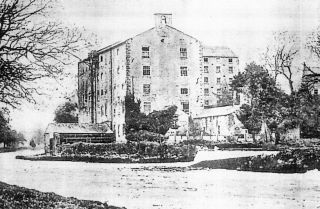
Navan It's Peopleand It's Past.
Journal of the
Navan and District Hstorical Society.
Volume 4.
Page 21.
Aspects of Navan's Industrial Hertigage- A Brief History of The Two Mills in Athlumney and the Factory Village.
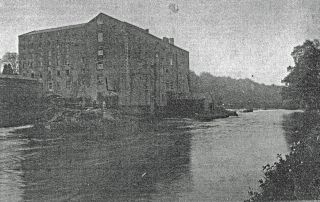
This six-storey flax mill, pictured above, originally cost over £20,000 to erect and was one of the first buildings in Ireland designed to resist fire.
The site was leased to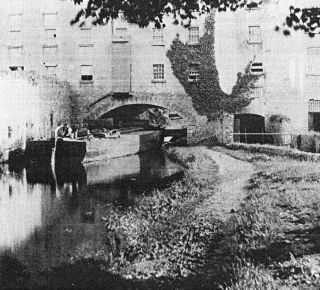 John Blundell,
John Blundell,
a Lancashire man, by the River Boyne Company.
The mill was erected beside
and over the canal and
running parallel to the river.
The Boyne River and its main tributary, the Blackwater, provided the power required to drive the machinery, while the canal and river navigation afforded cheap and easy transport (pictured left).
Blundell built the mill in 1806, and in 1809 leased land at Athlumney from John and Richard Ruxton, as a site for a yarn factory. He became involved in a lawsuit with the Ruxtons and it was his successors who had to pay damages and a substantial rent for the use of half the Boyne waters. John Blundell died early in 1811 and his administrator, Christopher Blundell, died shortly afterward.
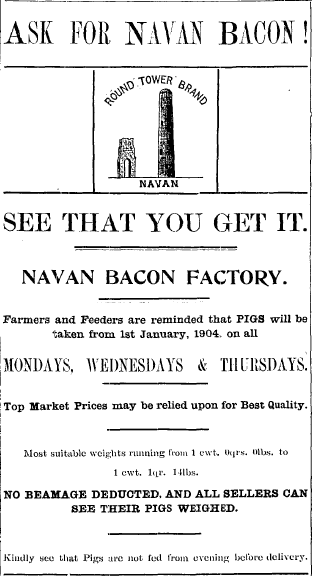 Blayney Balfour, trustee of the estate
Blayney Balfour, trustee of the estate
in 1841 leased the mill to
Roger Hamill and Nicholas Matthew Wade.
When the latter died the firms of Francis Blundell and Company of Dublin and Chadwick and Blundell of Drogheda took over.
The mill prospered and was employing several hundred people by the 1850s
But due to the industrial decline in the second half of the 19th century the Athlumney Mill became idle. However, in the midst of this slump, the area was revived by James McCann, M.P. He turned the flour mill into a Bacon Factory. (pictured below)
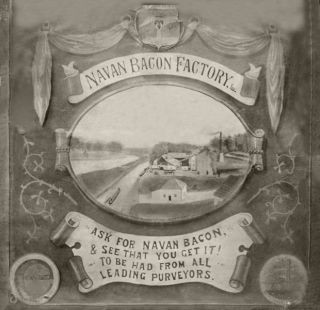
A flax mill was built to accommodate 32 double frames with 1800 spindles. 260 people were employed in this industry until the last quarter of the 19th century.
The firm supplied all sorts of native timber and was exporting sheds, fencing, crates and boxes to England through the Boyne Navigation.
The Goodearl Brothers in 1915 purchased both mills. They installed new machinery for the production of Windsor and cane-seated chairs. In 1919, however, due to Sinn Fein activity the firm was forced to withdraw and the business was taken over by Daniel Alesbury. He was the final owner of the Athlumney Mill.
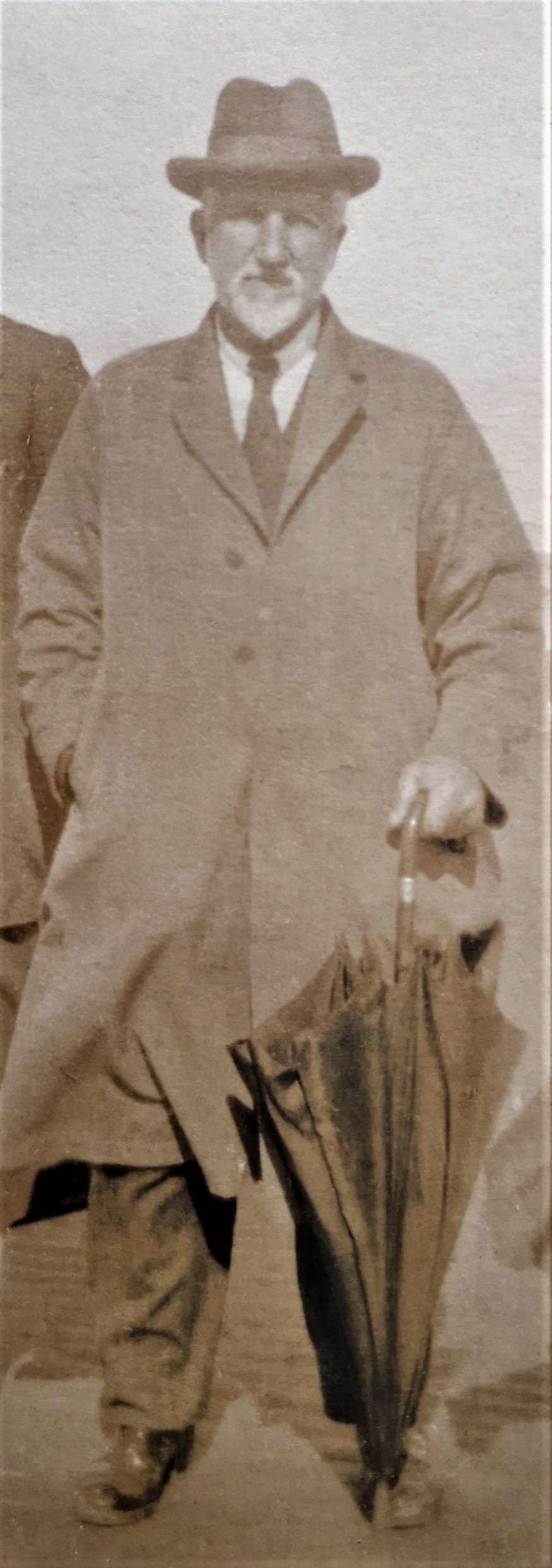
Daniel Alesbury (above)
Since the water power was insufficient to cope with the demands, they bought a steam engine from Stewarts of Boyle to alleviate this problem. He was a skilled engineer who specialised in the production of wood-spoked wheels for the English car factories as well as high class furniture. Alesbury's employed a workforce of around 100 men..
In March, 1933, the whole building was gutted by fire within four hours. The blaze began in the fibre room on the top storey, and it was able to spread easily to the other storeys due to the gaps cut in the iron plating for the machinery belting. The floors and walls of the mill remained intact. During the second world war large amounts of metal were removed from the building.
In 1974 the dangerous towering walls were demolished to form a ramp leading to the riverside walk.
Sources: The Waters of the Boyne and the Blackwater, Canon C. Ellison, Blackwater Press Dublin
Aspects of Navan's Industrial Heritage - A Brief History of the Two Mills in Athlumney and the Factory Village, Ethna Cantwell, Navan - Its People and its Past vol. 4 2017
***
Riocht na Midhe, 2016 page 214. Belgian Refugees 1915.
The Goodearl Brothers, who had recently set up a furniture factory in the disused Athlumney Mills, furnished a house in Navan for a Belgian family sent from Mullagh. Mrs. Mortimer, the Treasurer, set about collecting funds.
***